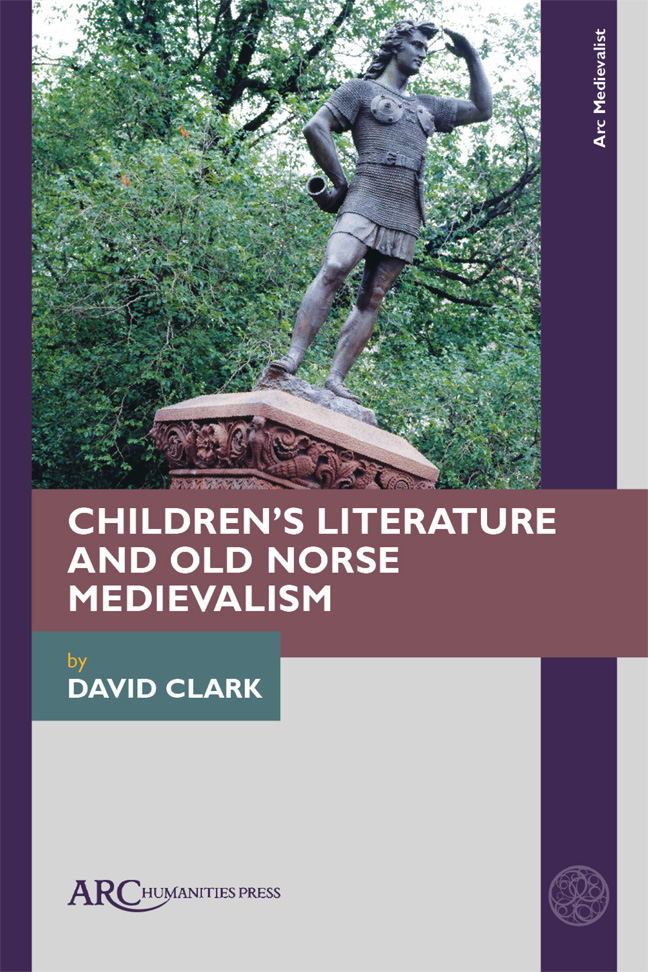Book contents
- Frontmatter
- Contents
- Acknowledgements
- Dedication
- Introduction: The End
- 1 Age-Related Categories
- 2 Generic Categories
- 3 Transformational Fantasy
- 4 Horned Helmets and Comic Anachronism
- 5 Viking Reputation
- 6 Runes and Magic
- 7 The Power of Story
- 8 Race and Ethnicity
- 9 Heroism
- 10 Viking Masculinity
- 11 Viking Femininity
- 12 Viking Sex and Gender
- 13 Bowdlerization
- 14 Sexuality
- 15 Ecological Threat
- 16 Norse Medievalism in Alan Early's Father of Lies Trilogy
- 17 Avoiding the End of Days: K. L. Armstrong and M. A. Marr's Blackwell Pages
- 18 Rick Riordan's Magnus Chase Series and Norse Medievalism
- Conclusion
- Select Bibliography of Frequently Cited Works
- Index
11 - Viking Femininity
Published online by Cambridge University Press: 17 February 2024
- Frontmatter
- Contents
- Acknowledgements
- Dedication
- Introduction: The End
- 1 Age-Related Categories
- 2 Generic Categories
- 3 Transformational Fantasy
- 4 Horned Helmets and Comic Anachronism
- 5 Viking Reputation
- 6 Runes and Magic
- 7 The Power of Story
- 8 Race and Ethnicity
- 9 Heroism
- 10 Viking Masculinity
- 11 Viking Femininity
- 12 Viking Sex and Gender
- 13 Bowdlerization
- 14 Sexuality
- 15 Ecological Threat
- 16 Norse Medievalism in Alan Early's Father of Lies Trilogy
- 17 Avoiding the End of Days: K. L. Armstrong and M. A. Marr's Blackwell Pages
- 18 Rick Riordan's Magnus Chase Series and Norse Medievalism
- Conclusion
- Select Bibliography of Frequently Cited Works
- Index
Summary
NORSE MEDIEVALIST CHILDREN'S literature of the twentieth century predominantly centres on male protagonists, and Viking masculinity, as we’ve seen, may be essentialized and presented as a model for young male readers. In the twenty-first century, however, female-led medievalist novels are much more prevalent than ever before, commercially successful, and read by children of all genders. On the other hand, they still tend to differentiate boys and girls sharply whilst providing more latitude to the latter in terms of gender roles.
In medievalist fiction, the pro-feminist message that girls can be as resourceful, fierce, and adventurous as anyone else is often explicitly grounded in Norse elements such as valkyries and shield-maidens. Alva, the heroine of Ramirez's Riddle of the Runes, for instance, is not content to obey her mother's desire for her to “stay at home, play mother, and tend to the men” and she provides a historical model for this rebellion as she speaks of “the spirit of Lagertha and all the shield maidens burning in me” (12).
Lagertha is the name of a Scandinavian warrior and leader in Saxo Grammaticus's twelfth-century Latin legendary history, Gesta Danorum (“The Deeds of the Danes”). Lagertha fights heroically, marries Ragnar Lothbrok and comes to his aid in battle even after he divorces her, but eventually kills him and takes his throne. The shield-maiden (ON skjaldmær), too, is a prominent feature of Old Norse literature, most notably in Her-vor's saga, and women like the eddic heroines Gudrun and Brynhild take up weapons and prove formidable foes. Scholars disagree over how far such figures were replicated in real life, but recent archaeological discoveries have shown that at least some women bore weapons. Gender itself in Old Norse culture seems sometimes to have been seen as a sliding scale rather than as primarily oppositional: the positive end of the scale rep-resents sanctioned forms of masculinity attainable by both women and men, and the negative end represents stigmatized femininity and effeminacy.
In Alva, Ramirez represents the Norse female masculinity of the shield-maidens in a form appropriate for younger children: not fighting and killing, but investigating and seeking out the truth despite any danger. Other medievalist novels depict female characters as a mixture of fierce warriors and bringers of peace, as the following examples show.
She Wolf
Dan Smith's She Wolf (2019) is a much darker historical novel for older children than Riddle of the Runes.
- Type
- Chapter
- Information
- Children's Literature and Old Norse Medievalism , pp. 97 - 102Publisher: Amsterdam University PressPrint publication year: 2023

